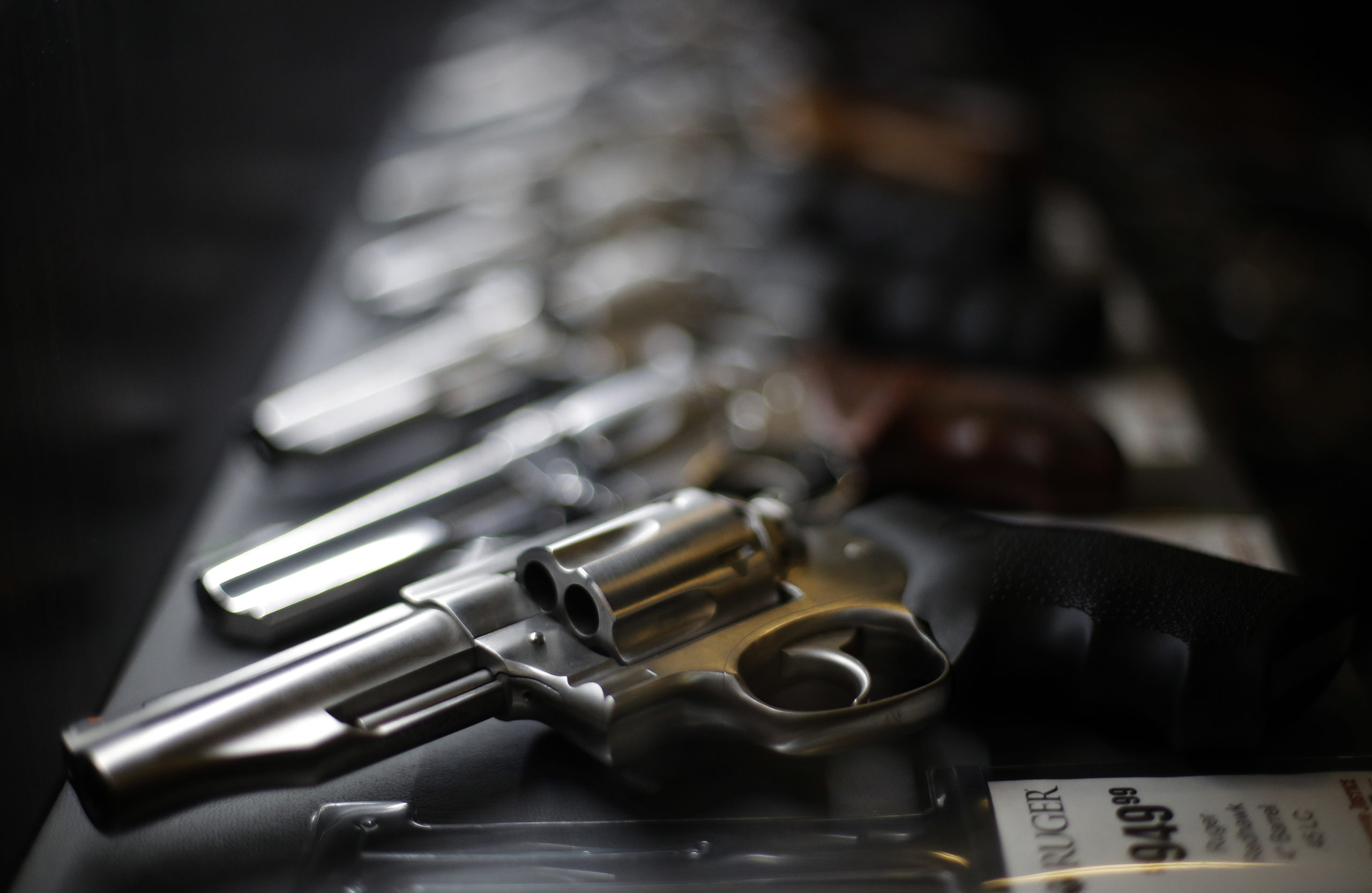What To Know Today
There are signs of a link between alcohol offenses, handgun ownership, and the suicide rate among men. That’s according to a study by researchers from the UC Davis Violence Prevention Research Program that looked at the 101,377 men over 21 who legally bought a handgun in California in 2001. The researchers then looked at criminal charges for drug- or alcohol-related offenses dating back to 1990 and state health records on suicides forward through 2015. They found that 594 of the men had died by suicide —nearly 90 percent using guns — and those charged with alcohol offenses prior to their firearms purchase had 2.2 times the suicide risk. The researchers found no link between drug charges and a higher suicide risk. (Women were excluded from the study because none who purchased handguns in 2001 and later died by suicide had drugs or alcohol histories.) What we learn: “This study helps us better identify the populations at elevated risk of suicide, which can, in turn, inform clinical interventions, firearm policy, and substance use prevention and treatment efforts,” lead author Julia Schleimer said in a press release. “For example, clinicians might counsel patients who have alcohol dependence and who own firearms about risk reduction strategies like safe firearm storage and temporary firearm transfer.” [If you are having thoughts of suicide, help is available 24 hours a day: Call the National Suicide Prevention Lifeline at 1-800-273-8255 or text 741741 to reach the Crisis Text Line.]
Cleaning and greening blighted areas for gun violence prevention. In major cities, a small number of areas — often in poor, majority-Black neighborhoods — account for a disproportionate share of violent crimes. In an op-ed for The New York Times, Dr. Eugenia C. South, professor of emergency medicine at the University of Pennsylvania, makes the case for how urban beautification projects can increase well-being and decrease violence. She highlights research and case studies she has conducted with colleagues, including a recent study we covered here, that found a large drop in violence in low-income areas where homeowners had received grants for home repairs. South’s conclusion: “Without changing these physical spaces in which crime occurs, violence-prevention efforts are incomplete. A focused and sustained investment in high-risk places should be a cornerstone in the effort to create safer and healthier communities.”
A shooting at a crowded bar in St. Paul leaves one person dead, 14 injured. Early Sunday morning, gunfire erupted near the city’s downtown, leaving what police said was a “hellish” scene inside the establishment and into the street. A woman in her 20s was the sole death, while the 14 people injured were all expected to survive. Police arrested three people as suspects, all of whom were among the injured and being treated in the hospital. “Our hearts break for the young woman who died and for her loved ones. And for everybody who was in that bar,” said a police spokesperson. The shooting was St. Paul’s 32nd homicide of the year, just two short of 2020’s year-end total, which itself tied a record reached in 1992. Nationwide, it was the 557th mass shooting of 2021, according to the Gun Violence Archive, and had the most victims since a shooting at a Tennessee grocery store less than three weeks ago.
13 shootings in 28 hours. Portland’s bloody weekend included a fatal shooting that leaves Oregon’s largest city just one short of the record-setting 70 homicides it saw through all of 1987. Police reported 151 bullet casings from the 13 shootings and said at least two men had been charged with murder by Sunday, when the violent spree came to a pause.
ICYMI: Federal prosecutors declined to charge the Wisconsin officer who shot Jacob Blake, Jr. Blake, a Black man, was paralyzed from the waist down when a white officer shot him in Kenosha last August. The incident set off protests and unrest in the region, including the subsequent fatal shooting of two protesters. The Department of Justice said late Friday there wasn’t enough evidence that the officer violated Blake’s federal rights or intentionally used excessive force. State prosecutors previously declined to file charges.
Data Point
$333 — the savings to society — in medical, policing, incarceration, and other costs — from every $1 invested in greening blighted areas. [American Journal of Public Health]

